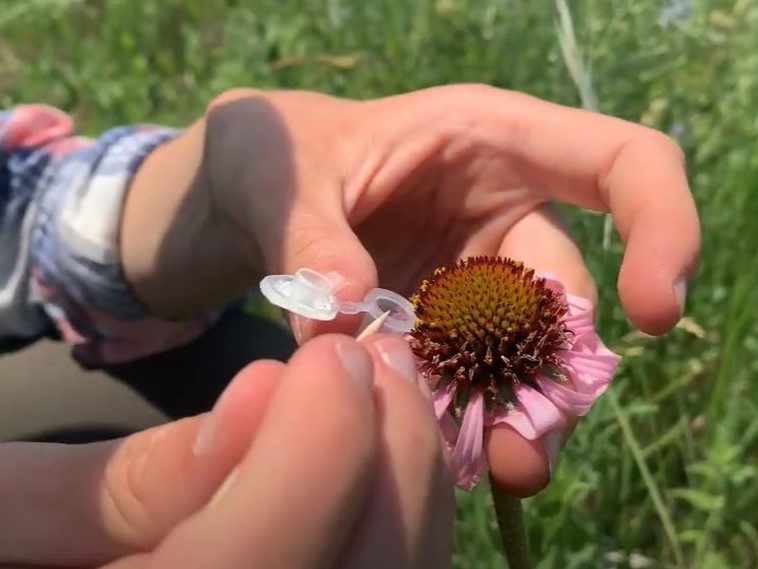In summer 2021, Amy Waananen continued the interremnant crosses experiment to understand how the distance between plants in space and in their timing of flowering influences the fitness of their offspring. This experiment builds on Amy’s study of gene flow and pollen movement in the remnants, asking the question of how pollen movement patterns affect offspring establishment and fitness. If plants that are located close together or flower at the same time are closely related, their offspring might be more closely related and inbred, and have lower fitness than plants that are far apart and/or flower more asynchronously. In other words, if distance in space or time is correlated with relatedness, we’d expect mating between more distant or asynchronous individuals to result in more fit offspring.
To test this hypothesis, Amy performed crosses between plants across a range of spatial isolation (within the same population, in adjacent populations, and in far-apart populations) in 2020. With the team’s help, she also kept track of the individuals’ flowering time to assess whether reproductive synchrony is associated with reduced offspring fitness, suggesting that individuals that flower at the same time are more closely related.
In 2021, Amy repeated the same hand crossing methods to assess the fitness consequences of outcrossing, this year on 44 focal plants.
To learn more about Amy’s project, check out this video created by RET participant Alex Wicker.
Start year: 2020
Location: On27, SGC, GC, NGC, EELR, KJ, NNWLF, NWLF, LF
Overlaps with: phenology in the remnants, gene flow in the remnants
Data/Materials collected: Style shriveling and seed set and weight from crosses, start and end date of flowering, coordinates of all individuals in the populations listed above
Products: Stay tuned!


Leave a Reply